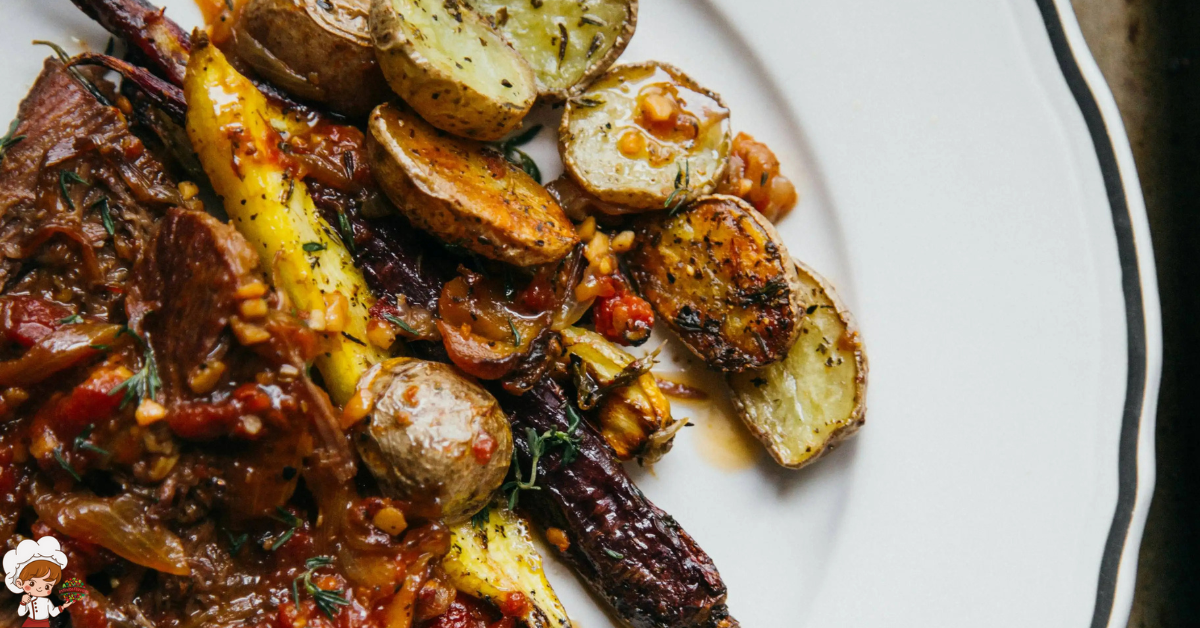The Best Thai Food Pairing With Wine

The Best Thai Food Pairing With Wine; Are you a fan of Thai cuisine? The bold and vibrant flavors, the perfect balance of sweet, spicy, and sour – they all come together to create a culinary experience like no other. But have you ever wondered how to enhance your Thai dining experience even further? That’s where wine comes in.
Yes, you read that right – wine. In this discussion, we will explore the art of Thai food pairing with wine and discover how the right bottle can elevate your favorite Thai dishes to new heights. So, whether you’re a wine connoisseur or simply enjoy exploring new flavors, get ready to embark on a delicious journey that will tantalize your taste buds and leave you craving for more.
The Basics of Thai Cuisine
When exploring the basics of Thai cuisine, it is important to understand the unique flavors, aromatic herbs, and vibrant spices that define this beloved culinary tradition. Thai cuisine is known for its bold and complex flavors, which are achieved through a combination of carefully selected ingredients and traditional cooking techniques.
To truly appreciate Thai cuisine, it is essential to have a deep understanding of the ingredients used in Thai cooking. Thai cuisine typically incorporates a variety of fresh herbs and spices, such as lemongrass, galangal, kaffir lime leaves, and Thai basil. These ingredients add depth and complexity to dishes, creating a harmonious blend of flavors. Additionally, Thai cuisine often features staple ingredients like fish sauce, soy sauce, and palm sugar, which lend a distinct umami and sweetness to the dishes.
In addition to the unique ingredients, traditional Thai cooking techniques play a crucial role in the preparation of Thai dishes. One of the most important techniques is the use of a mortar and pestle to pound herbs and spices into a paste, which then becomes the base for many Thai curries and sauces. Stir-frying is also a commonly used technique, allowing the flavors of the ingredients to come together quickly over high heat.
Understanding Thai Flavor Profiles
When it comes to understanding Thai flavor profiles, there are two key points to consider: spice and heat levels, and the balance of flavors. Thai cuisine is known for its bold use of spices and chili peppers, which can range from mild to extremely hot. Additionally, Thai dishes are expertly crafted to achieve a harmonious balance of sweet, sour, salty, and spicy flavors, creating a complex and unique taste experience. Understanding these flavor profiles is essential for successfully pairing Thai food with wine.
Spice and Heat Levels
Understanding the flavor profiles of Thai cuisine involves delving into the intricate balance of spice and heat levels that make each dish unique. Thai food is known for its bold and vibrant flavors, with a wide range of spice levels that can vary from mild to extremely hot. If you’re not a fan of spicy food, don’t worry, there are plenty of alternatives to choose from.
Thai cuisine also incorporates cooling ingredients to balance out the heat, such as coconut milk, lime juice, and fresh herbs like cilantro and mint. These cooling ingredients help to soothe the palate and provide a refreshing contrast to the spicy elements in the dish. Whether you prefer mild or fiery hot, Thai cuisine offers a wide variety of flavors and heat levels to suit every taste.
Balance of Flavors
To fully appreciate the complexity of Thai cuisine, you must delve into the intricate balance of flavors that create its unique flavor profiles. Thai food is known for its harmonious combination of sweet, sour, salty, and spicy elements, resulting in a burst of flavors that dance on your palate. Achieving the right flavor balance is crucial in Thai cooking, as it enhances the overall dining experience.
When it comes to pairing Thai food with wine, understanding the flavor balance becomes even more important. The bold and vibrant flavors of Thai dishes can sometimes overpower certain wines, while others can complement and elevate the flavors. Pairing techniques such as matching intensity, considering acidity, and balancing sweetness can help you find the perfect wine to enhance the flavors of your favorite Thai dishes.
Choosing the Right Wine for Spicy Thai Dishes
When it comes to pairing wine with spicy Thai dishes, finding the right balance is key. The heat of the spices can overpower certain wines, so it’s important to choose a wine that can stand up to the bold flavors. Look for wines with higher acidity and lower alcohol content, such as Riesling or Gewürztraminer, as they can help to cool down the heat and complement the complex flavors of the dish.
Wine and Spice Compatibility
Pairing wine with spicy Thai dishes can be a delightful challenge, as the right wine can enhance the flavors and balance the heat to create a harmonious dining experience. When it comes to pairing wine with Thai curries, it’s important to consider the spice level and intensity of the dish. Spicy food and wine can be a tricky combination, as high levels of spice can overpower the flavors of the wine.
However, there are wines that can complement and even enhance the flavors of spicy Thai curries. For red curry dishes, a medium-bodied red wine like a Pinot Noir or a Syrah can complement the spiciness while providing a fruity and earthy balance. For green curry dishes, a crisp and aromatic white wine like a Riesling or a Gewürztraminer can cut through the heat and highlight the herbal and citrus flavors. Finding the right wine and spice compatibility is all about experimenting and finding the balance that suits your palate.
Balancing Flavors Effectively
Finding the perfect wine to balance the flavors of spicy Thai dishes can be a delightful exploration of taste and texture. When it comes to pairing wine with spicy Thai cuisine, it’s important to consider the balance of sweetness and contrasting flavors. Here are some tips to help you choose the right wine:
- Look for wines with a touch of sweetness to balance the heat of the dish. A slightly sweet Riesling or Gewürztraminer can complement the spiciness and provide a refreshing contrast.
- Opt for wines with high acidity to cut through the richness of the dish. A crisp Sauvignon Blanc or a sparkling wine like Prosecco can help cleanse your palate and enhance the flavors.
- Consider wines with fruity characteristics to complement the vibrant flavors of Thai cuisine. A fruity Pinot Noir or a fruity rosé can add a layer of complexity to your dining experience.
Wine Pairings for Creamy Thai Curries
For a truly indulgent dining experience, discover the perfect wine to complement the rich and creamy flavors of Thai curries. When it comes to wine pairings for creamy curries, you’ll want to choose a wine that can stand up to the bold flavors and spices while also providing a refreshing contrast to the creamy texture.
One great option for pairing with creamy Thai curries is a Gewürztraminer. This white wine is known for its aromatic and slightly sweet characteristics, which can help to balance out the spiciness of the curry. The floral and fruity notes of Gewürztraminer also enhance the creamy flavors, creating a harmonious marriage of tastes.
Another excellent choice is a Viognier. This full-bodied white wine offers a luscious mouthfeel and a rich, tropical fruit profile. Its natural acidity helps to cut through the richness of the curry, while the fruity flavors complement the creamy elements. Viognier’s boldness makes it an ideal partner for the intense flavors of Thai curries.
If you prefer red wine, look for a lighter-bodied option such as a Pinot Noir. This versatile red wine has a delicate and smooth character that won’t overpower the curry. With its fruity and earthy notes, Pinot Noir adds a subtle complexity to the creamy flavors, elevating the overall dining experience.
When it comes to wine pairings for creamy Thai curries, the key is to find a wine that can complement and enhance the flavors without overpowering them. Whether you choose a Gewürztraminer, Viognier, or Pinot Noir, these wines will bring out the best in your creamy curry dish, creating a truly memorable dining experience.
Pairing Wine With Tangy and Sour Thai Salads
Enhance the vibrant flavors of tangy and sour Thai salads with the perfect wine pairing. The combination of tangy and sour ingredients like lime juice, vinegar, and tamarind in Thai salads creates a refreshing and zesty taste that is perfect for hot summer days. To complement these flavors, you need a wine that can balance the acidity and provide a burst of tropical fruit flavors.
Here are some wine pairings that will elevate your tangy and sour Thai salads to a whole new level:
- Sauvignon Blanc: This crisp and refreshing white wine is known for its vibrant acidity and tropical fruit aromas. The zesty flavors of lime, green apple, and passionfruit in the wine will harmonize beautifully with the tangy and sour elements in the salad.
- Riesling: With its high acidity and fruity sweetness, Riesling is an excellent choice for pairing with spicy salads. The wine’s notes of peach, apricot, and honey will complement the tangy flavors in the salad and help to balance the heat from the spices.
- Rosé: A dry rosé with its delicate fruit flavors and refreshing acidity is a versatile choice for tangy and sour Thai salads. The wine’s red berry notes and floral aromas will enhance the vibrant flavors of the salad and provide a crisp and refreshing contrast.
When pairing wine with tangy and sour Thai salads, look for wines that have high acidity and tropical fruit flavors. These wines will complement the tangy and sour elements in the salad and provide a refreshing and balanced pairing. Experiment with different wine styles to find the perfect match for your favorite Thai salad recipe.
Exploring Wine Pairings for Thai Seafood Dishes
To further elevate your Thai culinary experience, let’s now explore the art of wine pairing with the exquisite flavors of Thai seafood dishes. Pairing wine with seafood can be a delicate task, as the flavors of seafood can vary from light and delicate to rich and robust. Thai cuisine, known for its bold and complex flavors, presents a unique challenge when it comes to finding the perfect wine pairing. However, with a little knowledge and experimentation, you can discover delightful combinations that enhance the flavors of both the wine and the seafood.
When exploring Thai seafood dishes, it is important to consider the dominant flavors present in the dish. Thai cuisine is known for its vibrant combination of sweet, sour, spicy, and salty flavors, which can be found in dishes like Tom Yum Goong (spicy shrimp soup) and Pla Rad Prik (fried fish with chili sauce). These bold flavors require wines with a good balance of acidity, sweetness, and fruitiness.
For dishes with tangy and sour flavors, such as the popular Thai dish Pad Thai with shrimp, a crisp and refreshing white wine like a Sauvignon Blanc or a Riesling would be an excellent choice. The acidity in these wines helps to cut through the tanginess of the dish, while their citrusy and fruity notes complement the flavors of the seafood.
For richer and spicier seafood dishes, such as the spicy green curry with prawns, a wine with a touch of sweetness can help balance the heat. A Gewürztraminer or a off-dry Riesling would be a great match, as their slightly sweet profile can counterbalance the spiciness and enhance the flavors of the seafood.
Finding the Perfect Wine for Thai Stir-Fries
If you want to take your Thai stir-fries to the next level, let’s explore the art of finding the perfect wine pairing to complement the vibrant flavors of this popular Thai dish. Stir-fries are known for their bold and spicy flavors, and finding a wine that can stand up to these flavors can truly elevate your dining experience. Here are some tips to help you find the perfect wine for your Thai stir-fries:
- Consider the heat: Thai stir-fries often incorporate spicy ingredients like chili peppers and curry pastes. To balance the heat, opt for a wine with a touch of sweetness, such as a Riesling or Gewürztraminer. These wines have a natural sweetness that can help cool down the spiciness of the dish.
- Go for crisp and refreshing: The vibrant flavors in Thai stir-fries call for a wine that is crisp and refreshing. Look for wines with high acidity, like a Sauvignon Blanc or a dry rosé. These wines can help cleanse your palate between each bite, allowing you to fully appreciate the flavors of the dish.
- Experiment with aromatic wines: Thai cuisine is known for its aromatic spices and herbs. To enhance the aromatic experience, try pairing your stir-fries with a wine that has intense aromas, such as a Gewürztraminer or a Viognier. These wines can complement the fragrant ingredients in the dish and add another layer of complexity to your meal.
When pairing wine with Thai stir-fries, it’s important to consider the specific flavors and spices in the dish. By choosing a wine that can balance the heat, provide a refreshing palate cleanse, and enhance the aromas, you can create a harmonious pairing that will take your Thai stir-fries to new heights.
Wine Pairings for Thai Noodle and Rice Dishes
For those looking to elevate their Thai noodle and rice dishes to new heights, finding the perfect wine pairing is essential. Thai cuisine is known for its bold flavors, aromatic spices, and diverse range of ingredients. From hearty noodle soups to flavorful rice dishes, there is a wide variety of options to choose from. To enhance your dining experience, it’s important to select a wine that complements these dishes and enhances their flavors.
When it comes to Thai noodle dishes like Pad Thai or Drunken Noodles, a crisp and refreshing white wine is an excellent choice. The acidity and fruitiness of wines such as Sauvignon Blanc or Riesling can cut through the richness of the noodles and balance the flavors. The citrus notes in these wines can also complement the tanginess of the lime juice often used in these dishes.
For rice-based dishes like Khao Pad or Pineapple Fried Rice, a light-bodied red wine like Pinot Noir or Gamay can work wonders. These wines have enough acidity to balance the flavors of the dish without overpowering them. The subtle fruitiness and earthy undertones of these red wines can enhance the savory and aromatic components of the rice dishes.
If you’re indulging in Thai street food favorites like Pad See Ew or Khao Soi, consider pairing them with a medium-bodied red wine like Merlot or Syrah. These wines have enough structure and tannins to complement the bold flavors of the dishes. The ripe fruit flavors and spicy notes in these red wines can enhance the complexity of the street food flavors.
Enhancing Thai Desserts With Wine
Indulge in the perfect pairing of wine and Thai desserts to elevate your dining experience. The rich and creamy Mango Sticky Rice dessert finds its match in a sweet and fruity wine, enhancing the flavors of both. For a refreshing treat, pair a scoop of Coconut Ice Cream with a crisp and aromatic wine, creating a harmonious blend of tropical flavors. Finally, the delicate and smooth Thai Custard is beautifully complemented by a dessert wine, adding a touch of elegance to every bite.
Wine and Mango Sticky Rice
Enhance your Thai dessert experience with the perfect wine pairing for Mango Sticky Rice. This classic Thai dessert consists of sweet and sticky rice cooked in coconut milk, served with ripe mango slices. To elevate the flavors of this delightful dessert, consider pairing it with a suitable wine. Here are three options to consider:
- Gewürztraminer: This aromatic white wine pairs well with the fragrant Thai spices used in the Mango Sticky Rice. Its notes of lychee, rose petals, and tropical fruits complement the sweetness of the dessert.
- Moscato d’Asti: Known for its light and sparkling nature, this sweet Italian wine is an excellent match for the creamy coconut and juicy mango flavors of the dessert. Its floral and fruity aromas add a refreshing touch.
- Late Harvest Riesling: This dessert wine is a great choice for those who prefer a sweeter option. With its honeyed notes, apricot flavors, and balanced acidity, it harmonizes beautifully with the flavors of the Mango Sticky Rice.
Indulge in the perfect combination of Thai dessert and wine, and let your taste buds embark on a delightful journey of flavors.
Wine and Coconut Ice Cream
Pair your Coconut Ice Cream with the perfect wine to enhance the flavors of this creamy and refreshing Thai dessert. While traditional Thai desserts are not typically paired with wine, the combination of wine and coconut ice cream can create a unique and delightful experience for your taste buds. When selecting a wine to pair with coconut ice cream, you want to find one that complements the sweetness of the dessert without overpowering it. A light-bodied, slightly sweet white wine, such as Riesling or Moscato, can be an excellent choice.
These wines have fruity flavors that can enhance the tropical notes of the coconut ice cream. Additionally, wines that pair well with mango sorbet or Thai fruit salads, like Gewürztraminer or Chenin Blanc, can also be suitable options. The refreshing acidity of these wines can cut through the richness of the dessert, creating a harmonious balance of flavors. So, next time you enjoy a bowl of coconut ice cream, don’t forget to pour yourself a glass of wine to elevate the experience.
Wine and Thai Custard
When exploring the world of Thai desserts, it’s fascinating to discover how wine can elevate the flavors of traditional Thai custard. The combination of wine and Thai spices creates a delightful harmony of tastes that enhances the sweetness and creaminess of the custard. Here are three ways in which wine can enhance traditional Thai desserts:
- Wine adds a subtle fruity undertone to the custard, complementing the richness of the coconut milk and eggs.
- The acidity of the wine helps to cut through the sweetness of the custard, creating a more balanced and refreshing dessert experience.
- The complex flavors of the wine, such as hints of tropical fruits or floral notes, can add depth and complexity to the custard, making it a more sophisticated treat.
Tips for Hosting a Thai Wine Pairing Dinner
To ensure a successful Thai wine pairing dinner, consider these expert tips for hosting a memorable and harmonious culinary experience. Hosting a Thai wine pairing dinner requires careful planning and attention to detail. The first step is to select the right wines that will complement the flavors of Thai cuisine.
When choosing wines for your Thai dinner, opt for ones that have a good balance of acidity and sweetness. Thai dishes can be spicy, so you’ll want wines that can stand up to the heat and provide a refreshing contrast. Riesling is an excellent choice, as its natural acidity and fruity flavors can enhance the complex flavors of Thai food. Gewürztraminer is another great option, with its aromatic and spicy profile that pairs well with the bold flavors of Thai cuisine.
Consider the intensity of the dishes you’ll be serving when selecting wines. Lighter dishes, like fresh salads or steamed seafood, pair well with crisp, dry white wines such as Sauvignon Blanc or Pinot Grigio. For richer and spicier dishes like curries or stir-fries, opt for medium-bodied red wines like Pinot Noir or Syrah.
To create a cohesive dining experience, it’s important to serve the wines at the right temperature. White wines should be chilled, but not too cold, as extreme cold can mask their flavors. Red wines should be served slightly below room temperature to allow their aromas and flavors to shine.
Lastly, don’t forget to educate your guests about the wine pairings. Provide them with tasting notes and information about each wine, explaining why it complements the specific dish. This will enhance their appreciation of the flavors and make the meal more enjoyable.
Frequently Asked Questions: The Best Thai Food Pairing With Wine
What Are Some Common Ingredients Used in Thai Cuisine?
When it comes to Thai cuisine, there are several common ingredients that add flavor and depth to the dishes. These include lemongrass, Thai basil, coconut milk, fish sauce, chili peppers, and galangal.
How Can I Adjust the Spiciness Level of a Thai Dish?
To adjust the spiciness level of a Thai dish, you can use Thai cooking techniques like adding more or less chili peppers, balancing with sweet and sour flavors, or serving with cooling ingredients like cucumber or coconut milk.
Are There Any Traditional Thai Drinks That Can Be Paired With Thai Food?
When it comes to pairing traditional Thai drinks with Thai food, there are plenty of options to explore. From refreshing coconut water to aromatic Thai iced tea, these non-alcoholic beverages complement the flavors of the cuisine perfectly. Additionally, for those looking for a creative twist, there are also various wine options that can elevate the dining experience. Whether it’s a crisp Riesling or a spicy Gewürztraminer, these wines can enhance the flavors of Thai dishes and add a new dimension to the meal.
Can I Use Red Wine Instead of White Wine When Pairing With Thai Dishes?
Using red wine instead of white wine when pairing with Thai dishes, is it a good idea? While it may not be the traditional choice, it can still work. However, consider alternative options like rosé or sparkling wine for a more complementary pairing.
Are There Any Specific Regions or Grape Varieties That Are Known to Pair Well With Thai Cuisine?
When it comes to pairing wine with Thai cuisine, specific regions and grape varieties can complement the flavors. The impact of wine on the dishes can enhance the spices and balance the heat.
Conclusion
In conclusion, pairing Thai food with wine can be a delightful experience that enhances the flavors of the cuisine. By understanding the basics of Thai cuisine and its flavor profiles, one can choose the right wine to complement spicy, creamy, tangy, and sour dishes. Whether it’s a Thai curry, salad, stir-fry, or noodle dish, there are wine options that can elevate the dining experience. Even Thai desserts can be enhanced with the right wine selection. So, next time you host a Thai wine pairing dinner, keep these tips in mind for a truly memorable culinary adventure.








